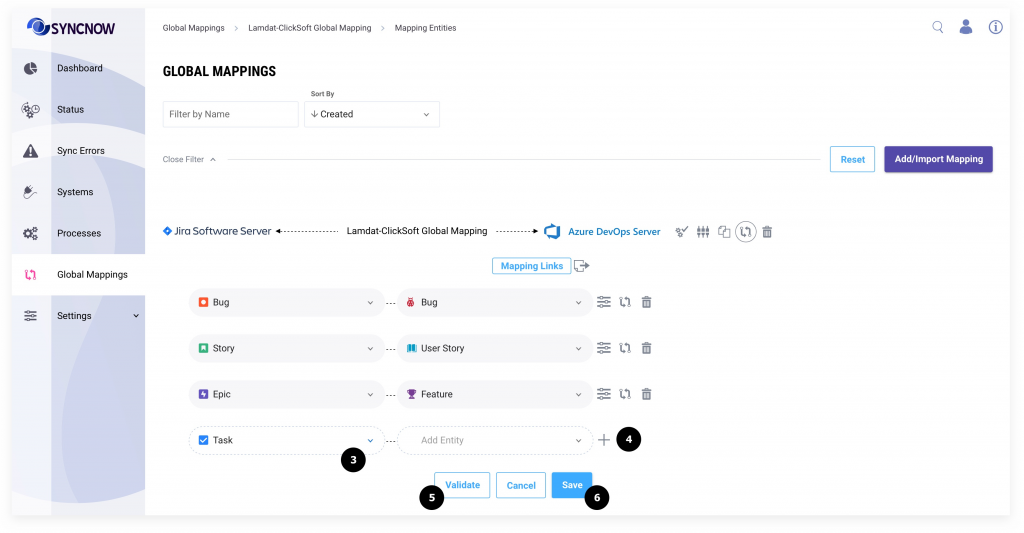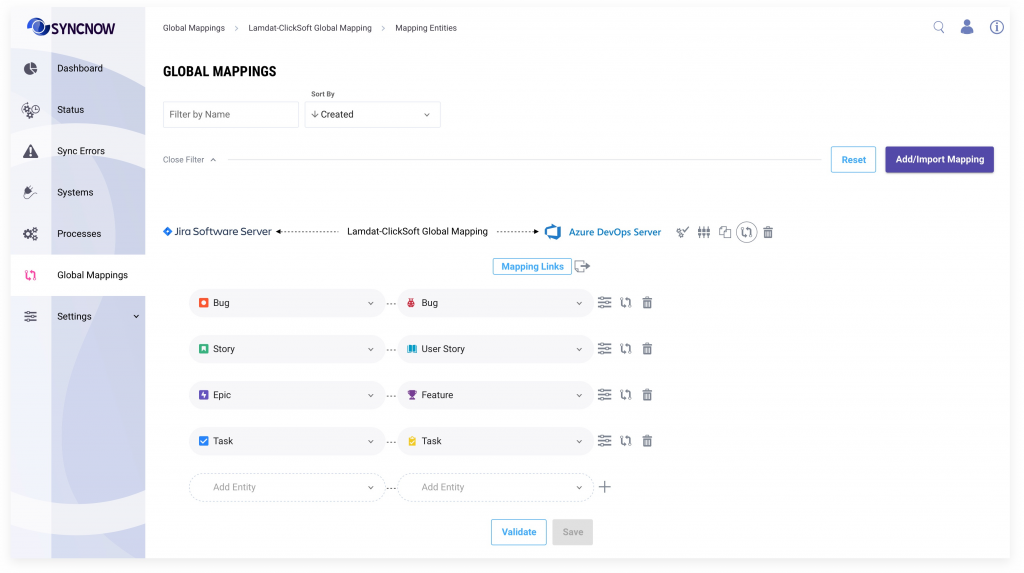How Can We Help?
Search for answers or browse our knowledge base.
Create Mapping
SyncNow mapping enables to create a synchronization process between two work systems. SyncNow Mapping consists of several main parts :
- The Entity pairs to be synchronized
- Entity mapping options such as filters , logging at target system, conflict resolution and if to allow creation or restoring of an entity on the target.
- Entity Links Mapping – support for linking | relating between entities
- Entity fields for every entity and their Synchronization data transform if needed
- Field Mapping transformation – Sync direction and a transformation to execute for every Sync Mapping, transformation can be from picklist mapping to code snippet mapping or pluggable mapping
Mapping Inheritance
SyncNow operators can create local mapping which is related to one process or global mapping that can be used for inheritance. Global mapping this includes entities , links field mappings. After inheriting from global mapping you can still customize and add new field or entities to the mapping.
Step By Step Guide
- Go to the Processes page
- Press the Mapping Entities button
2.2. If the process inherits a global mapping then press the Edit Global Mapping button

- Select entity type pairs that should be synchronized between each other (for example, Bug to Bug, Story to User Story)
- Press the Plus button to add one more entity pair
- Press the Validate button to verify if the processes which have already inherited the global mapping won’t be broken. Read more about validation
- Press the Save button.

The entities mapping have been created.
